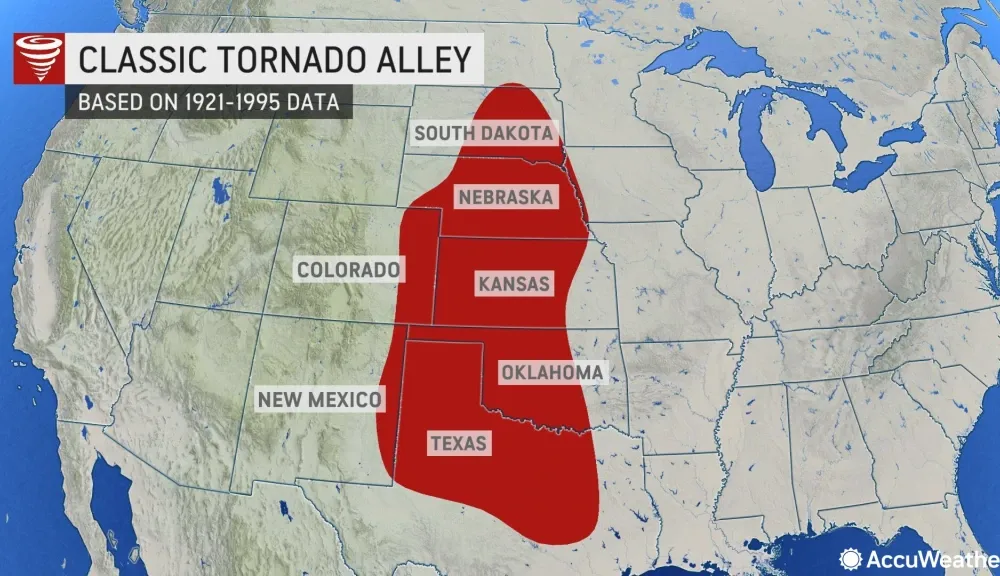News
Scientists warn of ‘Tornado alley’ shifting farther into the US east

Scientists have cautioned that the recent tornados which have caused chaos in the southern states could become more commonplace if global warming is not addressed.
Over 50 people died as a result of the tornadoes and thunderstorms in the past two weeks, with the latest powerful storms hitting states including Alabama, Illinois, Mississippi, Tennessee and Arkansas on Friday. One man survived by hiding in his bathtub, while a separate storm caused a tiger to escape a zoo.
President Joe Biden has pledged his help to those left homeless by the storms. Biden did express his shock at the severity of the tornado that leveled much of Rolling Fork, Mississippi, when he toured the town in the west of the state on Friday.
“Three minutes, this neighborhood is basically gone,” the president said. “Unless you physically saw it, it’s hard to believe. Three hundred homes and businesses that are nothing more than piles of twisted materials mixed up with personal items that mattered so much – teddy bears, family albums, clothes, dishes. The basics of life, all gone.”
Tornadoes have long posed a peril to a column of the central US known as “tornado alley”, spanning parts of Texas, Oklahoma, Kansas and Nebraska. While the influence of climate change upon tornadoes is still being investigated by scientists, some researchers believe there is evidence that this alley is moving eastwards and that storms could become more powerful as the world continues to heat up due to the burning of fossil fuels.
Previous research has shown that over the last few decades there has been a stagnation, or even small decrease, in the number of tornadoes in their traditional home range of the Great Plains, however, there has been an increase states further east, such as Tennessee, Mississippi, Alabama, Illinois and Indiana.
Walker Ashley, who is lead author of research that found the average number of supercells are expected to significantly increase this century, said that four key factors come to the table when a tornado is formed.
One is moisture in the atmosphere, which scientists are virtually certain is increasing due to rising global temperatures, while a second is instability in the atmosphere, the difference between hot and cold air that Ashley called the “gasoline needed for a storm” which is also expected to worsen amid the climate crisis.
But the other two key ingredients – wind shear, the change in wind direction and speed at different altitudes that “takes an ordinary storm and turns it into an organized menace”, according to Ashley, and the mechanisms that lift parcels of air up before they become storms – are more unclear in terms of their outcomes in a hotter world.
“Scientists are working very hard at these questions and we’d all like simple answers but these are tough questions to answer – I’d argue against linking any individual event to climate change,” said Ashley, an atmospheric scientist at Northern Illinois University. “A tornado can be just a few yards wide, not spanning a large area like a heatwave, so it will take a while before we have specific attribution.
“But we are fundamentally changing the ingredients that make a tornado, we are loading the dice towards more severe storms. We are increasing the odds that we will have more severe tornadoes throughout the 21st century, we are seeing that change happen already. The perils from these storms will probably get bigger, too.”
Ashley said that global heating could make these tornadoes stronger, however the other key variable is the “expanding bullseye” of where people reside in the path of wind and hail, Ashley said.
“There’s been explosive growth in the south in recent years and that unfortunately means we are turning up both the number of tornadoes in this area and the number of people exposed to them,” Ashley said.
“This has consequences – we are all paying that through premiums and government grants as we’ve collectively determined it’s OK to live in risky areas.
“We will need to think about building better and smarter, thinking more about how resilient the roof and garage doors are, for example, to live with these impacts. Because they are not going away.”
Terry A. Hurlbut has been a student of politics, philosophy, and science for more than 35 years. He is a graduate of Yale College and has served as a physician-level laboratory administrator in a 250-bed community hospital. He also is a serious student of the Bible, is conversant in its two primary original languages, and has followed the creation-science movement closely since 1993.
-

 Civilization2 days ago
Civilization2 days agoDC Pipe Bomb Arrest Raises Questions About Christopher’s Wray’s FBI
-

 Guest Columns4 days ago
Guest Columns4 days agoCongressional Leaders See Far Higher Stock Returns Than Peers
-

 Civilization3 days ago
Civilization3 days agoThe Legal Logic Behind U.S. Operations Against Narco-Terrorist Networks
-

 Civilization4 days ago
Civilization4 days agoHow Trump Changed America
-

 Executive3 days ago
Executive3 days agoNewsom’s ‘National Model’ for Homeless Wracked by Fraud
-

 Executive2 days ago
Executive2 days agoWhen You’re in a Hole, Stop Digging
-

 Education2 days ago
Education2 days agoWaste of the Day: Taxpayers Subsidize Football Coach Severance
-

 Civilization1 day ago
Civilization1 day agoPence Calls on Trump To Fire RFK Jr Over Abortion Drug


